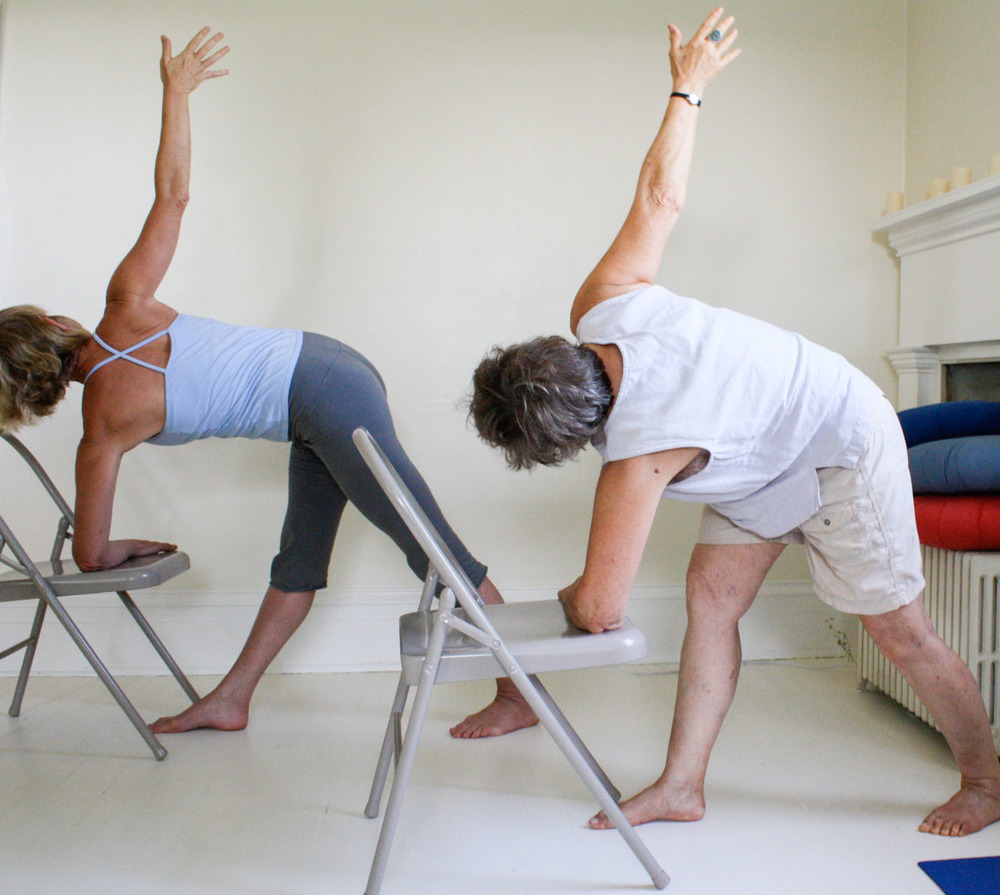
Seated Cat Pose: Hold the armrests or the knees, and alternately hollow and round the back, using your breath.Seated Mountain: Lift the arms with the palms touching or keep the hands in front of the heart.The last part of the yoga for seniors class is dedicated to some Chair Yoga asana (15 more minutes) Then lean slightly forward and come back to the center. Work on core stability: Sit up straight and then lean slightly backward, and back to the center.Perform seated Single-Leg Raises: Sit in the front part of the chair, activate the feet and leg muscles and stretch the leg forward, lift it up parallel to the floor and release.Place the ankle over the opposite knee and, if possible, bend forward for a hip opener.Stand up and sit down, holding the armrests or crossing the arms in front of the chest.


In the next part of the Chair Yoga for seniors, move on to some coordination and strength exercises, which will take about 15 minutes End with ankle rotations, 6 times each side.

Neck movements: Start by sitting up straight, with the shoulders kept low.Instruct students to move the eyes up and down, left to right, diagonal, and in circles. Eye movements: Finding a steady sitting position with the neck elongated students move their eyes without moving.Proceed with a few micro-exercises for 15 minutes, gently mobilizing the body They may also need more time to understand your instructions if they have cognitive disabilities. When you are teaching yoga in elderly’s homes or community centers, the people may talk during class. As a teacher, it is important to have a lot of patience.However, with assistance, you could teach bigger groups. The size of the group should remain small (10-15 people).

A suitable guideline for a yoga sequence for seniors class is 45-60 minutes, including initial and final relaxation. The class should not be too long, since a large part of the audience may be limited in energy (both mentally and physically).Apart from yoga studios, it is suitable for elderly’s homes, community centers, health centers, or rehabilitation centers. Chair Yoga can be offered in different settings.The exercises are very gentle, putting less strain on joints the chair is used as support, which is also of great help in the case of balance issues.The class moves at a slower pace than regular classes.Differences Between Chair Yoga and a Regular Yoga ClassĪ Chair Yoga class is different from a regular yoga class in several ways:


 0 kommentar(er)
0 kommentar(er)
